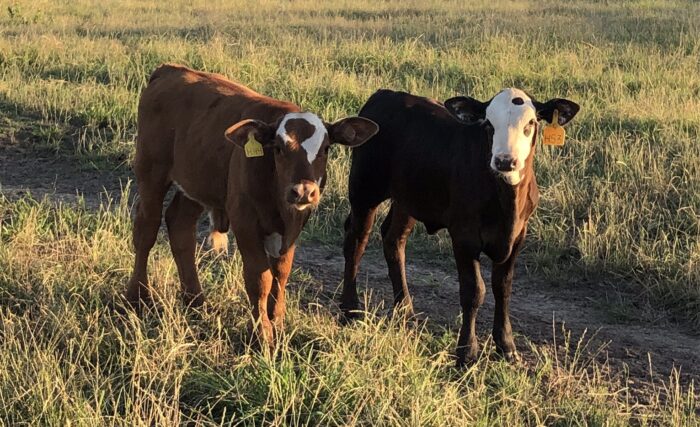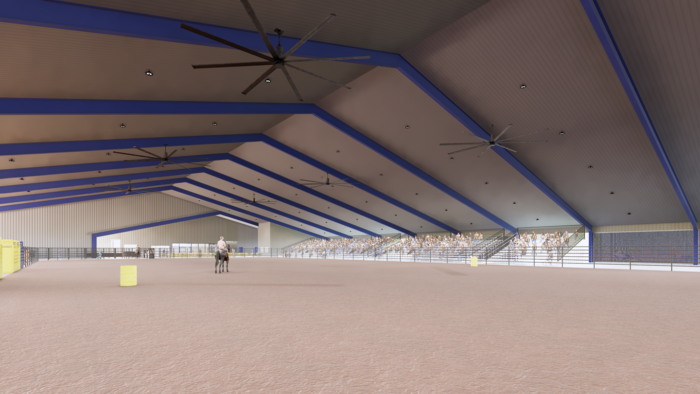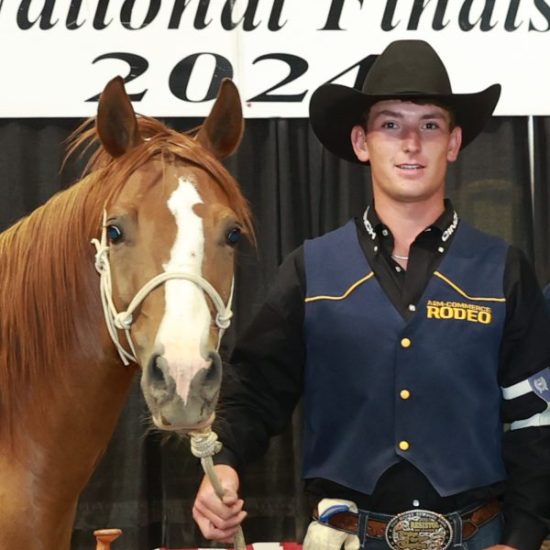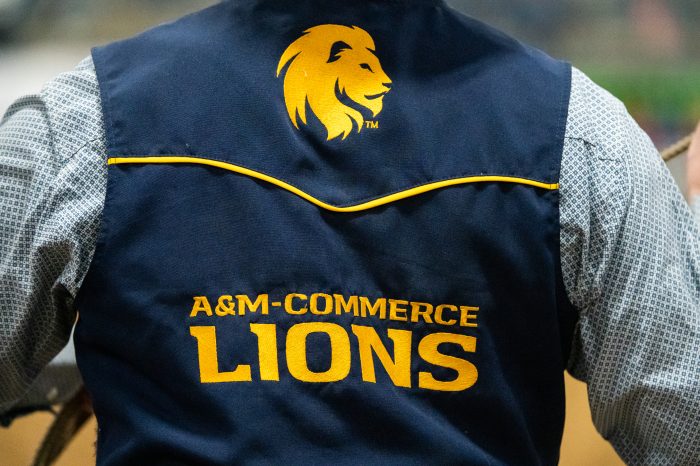A&M-Commerce Expects “Super Baldy” Beef Cattle Breeding Program to Move the University Herd in the Right Direction

The Texas A&M University-Commerce cow herd has seen a new addition as the College of Agricultural Sciences and Natural Resources is working to introduce a new focus for the breeding program.
The college expects the “Super Baldy” cow to add great value to an already strong animal science program.
The breeding project began five years ago, when the university made a sizable purchase to boost numbers in the herd. Dr. Douglas Eborn, assistant professor of animal science, says that this was the starting point toward the advent of the Super Baldy.
“Kilgore College was closing down its agriculture college in 2015, and we approached them to buy their herd,” Eborn said. “We were able to reach a deal and purchased about 100 cows and 50 calves.”
The purchase more than doubled the size of the herd at A&M-Commerce, which Eborn said was no more than 70 head of cattle at the time. He added that Kilgore had recently worked with Texas A&M AgriLife Research Center in Overton, Texas, and had begun breeding their Angus cows with Brahman bulls in the years preceding the closure.
“These were what I would call a true F1, 50 percent Brahman and 50 percent Angus,” Eborn said. An “F1” in the biological sense is the first filial generation of offspring of distinctly different parental types.
A&M-Commerce's animal science program would then create a “Super Baldy,” by breeding their F1 hybrids with Hereford bulls. The term “baldy” comes from the Super Baldy's mostly solid white face with a dark-colored body. Currently, the university owns more than a dozen Super Baldy females kept as replacements.
Eborn says there are many benefits to the Super Baldy. They are very tolerant to heat and have a fair amount of disease resistance. They also feature a calmer disposition and excellent mothering ability.
Another plus is the heterosis, or “hybrid vigor,” of the animal, meaning that it has a higher chance of improved or increased performance due to a new combination of genes.
“We hope that the strengths of these different breeds that will make up the Super Baldy will complement each other by improving the weaknesses of the other breeds,” Eborn said.
He added that the university plans to market the Super Baldy aggressively and increase the profile of the university's animal science efforts.
Dr. Randy Harp, dean of the College of Agricultural Sciences and Natural Resources at A&M-Commerce, says that the university's herd is headed in the right direction.
“I am proud to see the direction that our beef cattle program is heading,” Harp said. “It is a solid base herd that now stands to meet the challenges of heat and humidity in East Texas. This makes a great foundation for teaching and research at A&M-Commerce.”
Harp continued: “As we move forward, Super Baldies give us the ability to teach both the purebred and commercial beef industries to our students. I truly appreciate the faculty and staff that lead the way for our beef cattle as we embrace and become the premier agricultural university of East Texas.
Anyone interested in working with the A&M-Commerce beef cattle program regarding the donation of seed stock for the program, please contact [email protected] or [email protected].
More Agriculture & Natural Resources
View All Agriculture & Natural Resources
East Texas A&M to Establish Regional Hub for Agricultural Education with New Multipurpose Training Center
East Texas A&M University is set to become a major destination for agricultural education, thanks to a new Agricultural Education Multipurpose & Training Center currently under construction.

TAMUC’s Profili Captures Team Roping Championship at College National Finals Rodeo
Texas A&M University-Commerce Rodeo Team member Kaden Profili highlighted the Lions' success at the 2024 College National Finals Rodeo (CNFR) with a National Championshi...

Three Lions Qualify for College National Finals Rodeo
Following another successful season, three members of the Texas A&M University-Commerce Rodeo Team qualified for the College National...


